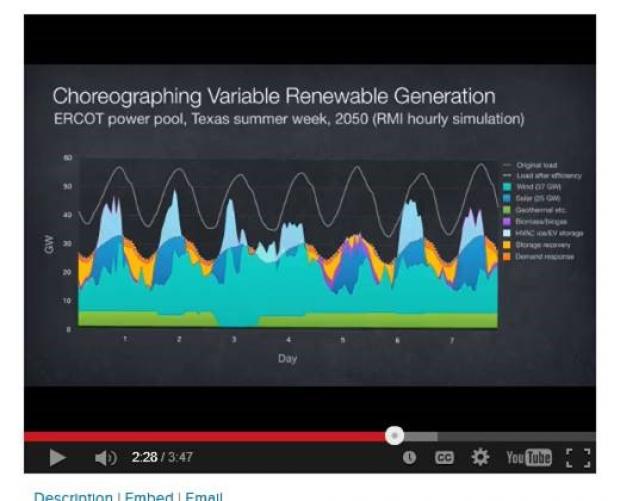Only the myth holds us back: “The storage necessity myth: how to choreograph high-renewables electricity systems” – short video narrated by Amory Lovins.
The Rocky Mountain Institute is doing extensive work to demonstrate how electricity systems can function reliably – instantaneously balancing electricity supply and demand – with growing amounts of intermittent renewables supplying the juice. They have distilled the case into a pithy video.
It’s less than 4 minutes long, and full of those little Amory-isms that make his presentations so quirky and delightful. After listing the European countries that currently operate electricity systems using up to 58% renewable power, for instance, Lovins concludes: “Whatever exists is possible.”

“We don’t need a storage breakthrough, or supposedly 24/7 so-called ‘baseload’ coal and nuclear plants to keep the lights on,” Lovins demonstrates. Using the Texas grid to illustrate, he matches resources to the load shape of the electric grid: Efficiency knocks off a good chunk of total demand and wind and solar supply most of the power; “dispatchable” renewables like geothermal and biogas fill in the rest.
The remaining gaps between supply and demand are filled by deploying distributed storage including ice storage air-conditioning and smart-charging electric cars, and “unobtrusively flexible demand” – Lovins-ese, presumably, for load management techniques like real-time pricing and water-heater cycling.
These small-ball approaches to synching up loads and resources on a renewably-powered grid are turning out to be more flexible and economical than centralized power storage and gas reserve generation for load following.
“Bottom line:” says Lovins, “bulk electric storage and fossil-fueled back up are the costliest ways to make the grid flexible, so we would use them last, not first.”
The video is a good short primer on “choreographing” a clean power system, but the RMI website has much more. The Regulatory Assistance Project is also an excellent resource. Jim Lazar’s “Teaching the ‘duck’ to fly” illustrates the incremental load-resource balancing effects of ten widely available and proven strategies, and concludes that the system will be easier to balance with renewables and the strategies than it would be with neither.
Give for a brighter future
Connect
Join our email list to learn about what we do and how to get involved.